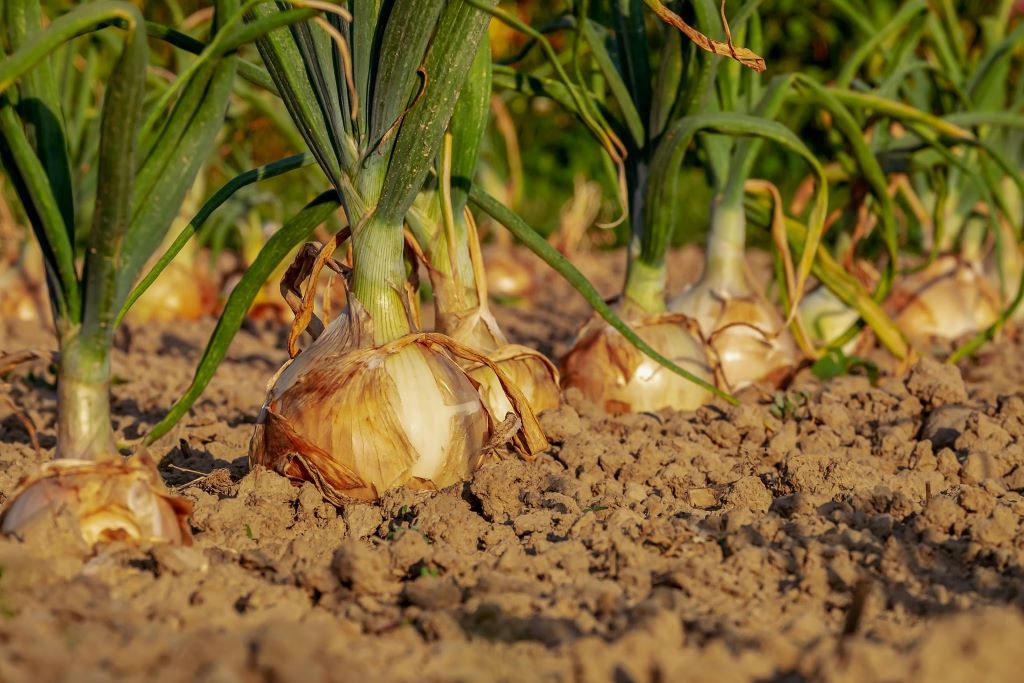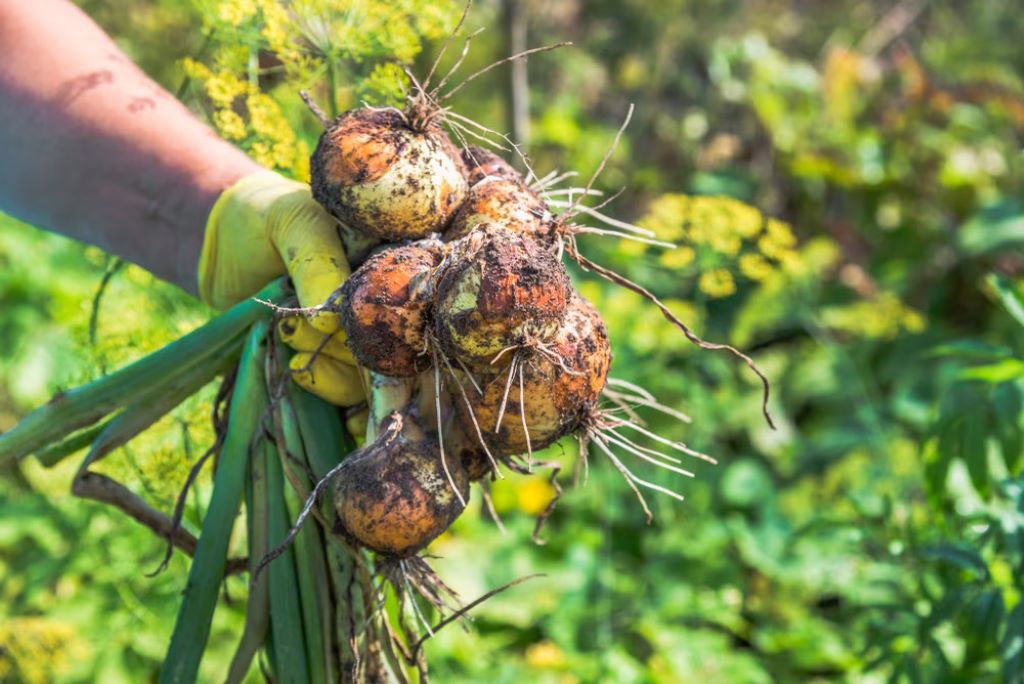Onions, with their pungent flavor and versatility, are a staple in many kitchens. Whether you’re a seasoned gardener or a beginner, knowing the exact moment to harvest your onions is crucial for optimal flavor, storage potential, and overall satisfaction. This guide delves into the key indicators that your onions are ripe for picking.
Understanding the Onion Life Cycle
Before we dive into the signs, let’s briefly recap the onion’s growth cycle. Onions are typically grown from sets (small bulbs) or seeds. They progress through various stages:
- Early Growth: Green shoots emerge, and the plant focuses on developing foliage.
- Bulb Formation: The onion bulb begins to swell as the plant stores nutrients.
- Maturation: The bulb reaches its full size, and the tops start to yellow and fall over.
- Harvest: The ideal time to harvest depends on your intended use (fresh eating or storage).
Key Signs Your Onions Are Ready for Harvest
Observing the following signs will help you determine the optimal harvest window:
- Tops Falling Over: One of the most obvious signs is when the onion tops naturally start to yellow, wither, and fall over. This usually happens when about 50-80% of the tops have collapsed. The remaining green tops continue to provide energy to the bulb, contributing to its flavor and storage capacity.
- Neck Softness: The neck of the onion (the area where the leaves meet the bulb) should feel soft and pliable. If it’s still firm and upright, the onion is likely not fully mature.
- Bulb Size: Gently feel the bulbs through the soil. They should be firm and have reached a size typical of the variety you’re growing. If in doubt, consult the seed packet or a reliable gardening resource for size expectations.
- Leaf Color: As the onion matures, the leaves gradually change from bright green to yellow or brown. While some green leaves are desirable, an excessive amount indicates the onion needs more time to develop.
- Skin Tightness: The outer skin of the onion should be dry and papery. Rubbing it gently should reveal tight layers that don’t easily separate. Loose or moist skin suggests the onion isn’t fully mature.
Related: How to germinate stevia seeds?
Timing Your Harvest for Different Purposes
- Fresh Eating: If you plan to consume your onions immediately, harvest them when about 50% of the tops have fallen over. This ensures a milder flavor and tender texture.
- Storage: For onions intended for long-term storage, wait until 80% or more of the tops have fallen. This allows the onions to develop a thicker, protective skin, which enhances their storage life.
Harvesting and Curing Your Onions
Once you’ve determined your onions are ready, carefully loosen the soil around them with a garden fork and gently lift them out. Avoid bruising the bulbs, as this can lead to spoilage. If you’re also interested in learning how to harvest willow cuttings, similar care should be taken to ensure the health of the plant.
After harvesting, cure your onions by spreading them out in a warm, dry, well-ventilated area for 2-3 weeks. This process helps dry the outer skin and seal in the flavors, ensuring your onions stay fresh for months to come.
Additional Tips
- Watering: Reduce watering as the tops begin to fall over. This helps prevent the bulbs from absorbing excess moisture, which can lead to rot.
- Pest and Disease Control: Monitor your onions throughout the growing season for signs of pests or diseases. Addressing these issues promptly will help ensure a healthy harvest.
- Variety Selection: Choose onion varieties that are well-suited to your climate and soil conditions. This will increase your chances of a successful harvest.
Harvesting onions at the right time is an art and science that requires observation and understanding of the plant’s cues. By following the signs outlined in this guide, you’ll be well on your way to enjoying a bountiful harvest of flavorful, long-lasting onions.





